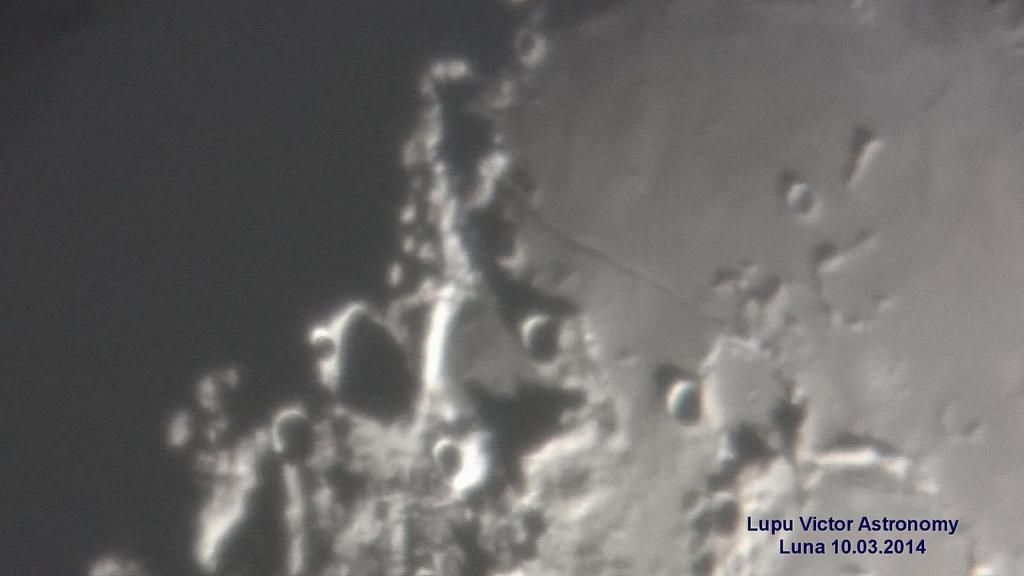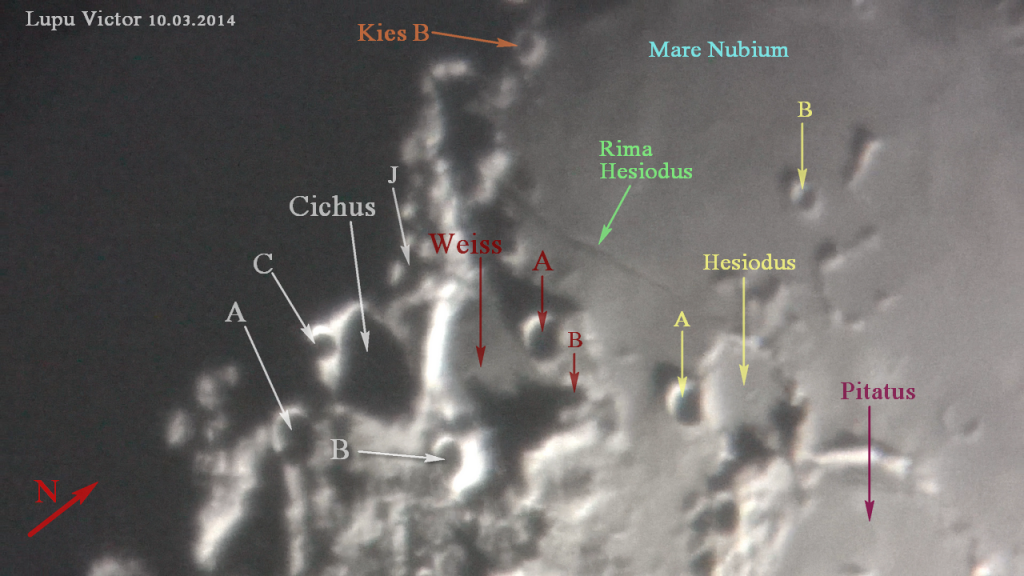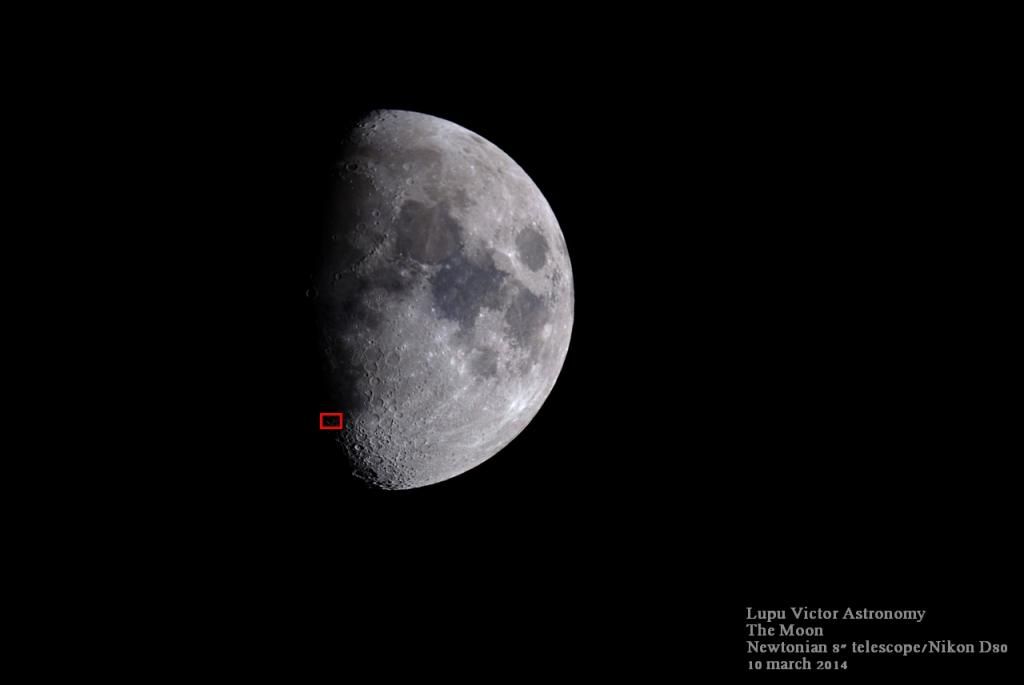These images by the 8 " astronomical telescope, captures an area that is very close to the terminal, where are some craters like Cichus, Weiss and Hesiodus (43 km).
One feature that I have not noticed by now, is Rima Hesiodus, a ditch that starts at the western edge of the crater Hesiodus (stuck to northwestern edge of Pitatus (97 km)), and which in straight line reaches the eastern edge of the plateau Palus Epidemiarum (not observed under these conditions, being in shade). This ditch has a length of 300 km. At this stage, stands as a black wire to the west, reaching the high belt that surrounds Palus Epidemiarum, at which a total darkness begins.
Cichus crater (41 km), is also in the shade, but only inside, so it can be observed the upper edge thereof. On the west side, we can distinguish very well a small crater called Cichus C (11 km). Cichus A (21 km), is seen on southwest of Cichus, and Cichus B (14 km), to the east.
A larger crater, is located east of Cichus, called Weiss (66 km). It has a floor flooded by basaltic lava, and therefore is so smooth.
The northern part of Weiss's wall is nonexistent, and on the area where the wall has been removed, is a smaller crater, Weiss E (17 km) (center in picture). A long shadow of its edge, is projecting on the smooth plateau of Mare Nubium.
Moon Age: 9.05 days
Phase: 70.5% (0% = New, 100% = Full)
Distance: 399.221 km
Optics: Celestron C8-Newtonian telescope, 20mm Plossl, 2x barlow
Mount: CG5 (EQ5)
Camera: Sony CX130
Filter: no
Date: 10/03/2014
Location: Baia Mare, Romania
Processing: FastStone Image Viewer




 Wednesday, October 29, 2014
Wednesday, October 29, 2014
 Unknown
Unknown





 Posted in:
Posted in: 


0 comments:
Post a Comment